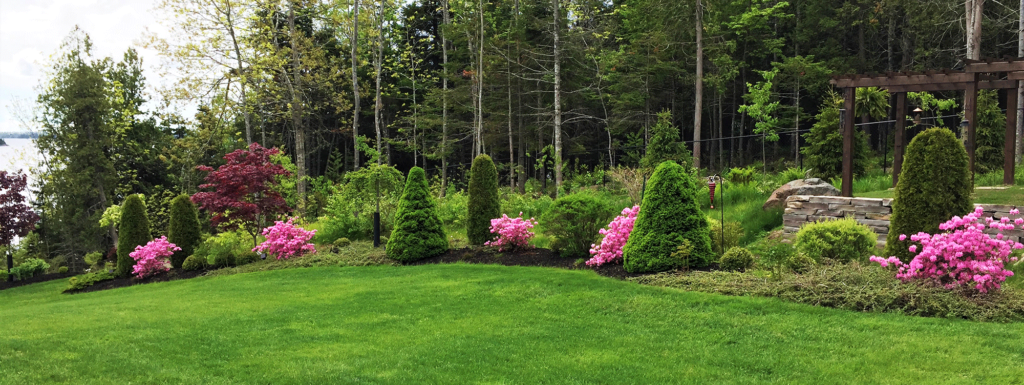Summer. What a glorious time of year. The frenzy of Spring gardening activity has subsided somewhat and it’s mostly just the mundane mowing routine that reminds us there are still things that need attention in the lawn and garden.

First things first…the LAWN. Double check the height of your mower blades. They should be cutting high enough so that there is about 3″-3.5″ of grass height . Keeping the mower blades slightly higher will not only help protect the crown and the roots of the grass, but it will also help promote deeper root growth. As well, those pesky chinch bugs do not tend to like lawns that are mowed higher because of the shade provided to the ground area. So, the benefits are twofold; a greener looking lawn that tolerates both drought and chinch bugs better.
Next, check the garden surface for the correct thickness and placement of bark mulch. Mulch should really be no thicker than about 2″ and should be kept away from the base and stem of the plant. Too many times I have driven by homes and businesses that keep piling too much mulch at the base of the plants and I shake my head. Although the issues are not readily apparent, over time the trunk will begin to rot and the shrub or tree will go into decline and die prematurely. Also, when mulch is too thick it prevents adequate moisture from penetrating down into the soil to be available to the roots. However, a correct amount of mulch does just the opposite and allows adequate moisture to remain in the soil for the roots rather than being subject to evaporation. Mulch also acts as a deterrent for high weed activity, saving you time and aching back muscles! There are a number of different colours and textures of bark mulch available as well as interesting substitutes such as coloured stone. Have a look and see what suits your fancy!
Finally, the summer and fall months are great for getting pruning done on the shrubs and trees in your gardens. Although Spring pruning is not harmful to shrubs, due to the nature of the growth patterns of plants, it promotes more “sucker” growth when pruning is done in the Spring. So, even though some flowers may be sacrificed in the pruning process, the plant can maintain its “pruned” look much longer after the Spring growth flush has finished. Pruning should be done on an annual basis (more often for some types of shrubs) to keep the gardens looking their best. When plants are allowed to grow for several years without being pruned, it may be difficult to cut them back enough to regain control of the plant. This is especially true of cedars. Since their foliage grows almost exclusively at the end of the branches, it is difficult to cut too much growth off without exposing ugly old, bare wood. So, a word to the wise. Take a bit of time now to prune…it will save a lot of frustration with your gardens down the road.
So, have a quick check of your lawn height, your mulch depth and placement, and assess what shrubs need a haircut. Then go back to enjoying the wonderful summer weather. Happy gardening!